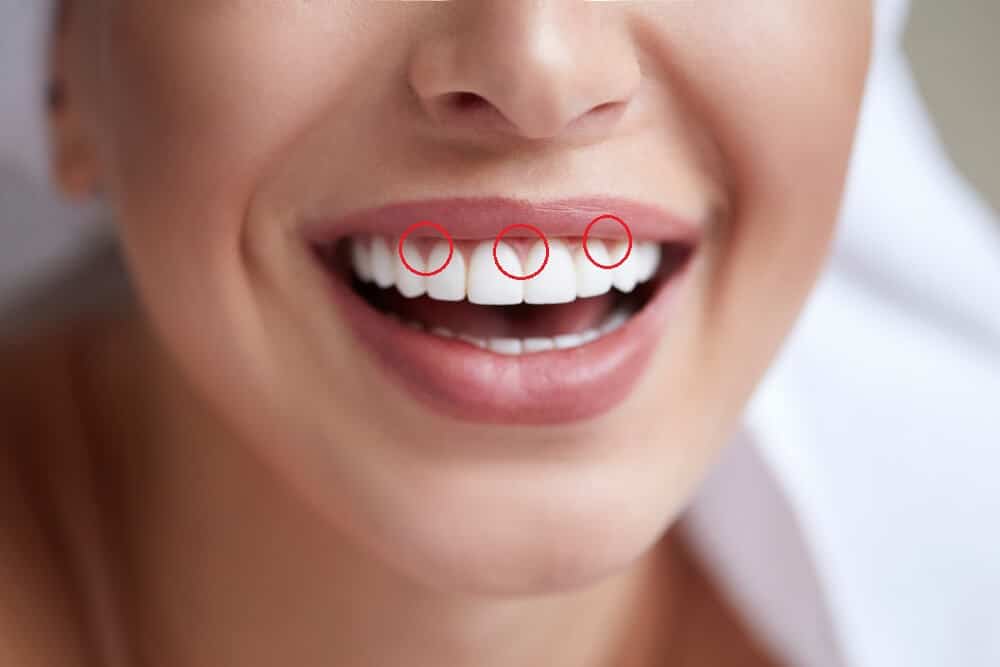Because of its placement between the teeth, the interdental papilla is susceptible to recession and degradation as a result of poor brushing and flossing, a lack of brushing and flossing, and dental problems such as gingivitis.

What is an interdental papilla?
The gum tissue that can be found in the space between the teeth is referred to as the interdental papilla. It helps to preserve the roots of your teeth and prevents food from becoming lodged between your teeth, both of which can lead to the development of cavities.
The Structure of the Interdental Papilla
The term “interdental papilla” refers to a little projection that looks like a nipple, while “papillae” is the plural form of the word. In this scenario, they are projections of the gums that are situated between the teeth. Dense connective tissue that is covered by oral epithelium makes up the interdental papilla’s structure. The interdental papillae in your mouth take the form of a pyramid and are located in the space between your incisors. They are more accommodating to the width of your back teeth.
Healthy interdental papillae are a coral pink color. They are fastened securely to your teeth and there are no spaces between them. They have the appearance of triangles and have a size that corresponds to the teeth in the mouth. In the event that a papilla falls off, you will be left with a dark triangle.
Inflammation can cause symptoms such as swelling, discomfort, redness, and sometimes bleeding in the affected area(s). If an interdental papilla is lost as a result of recession of the interdental papillae as a result of poor brushing, it is impossible for it to regenerate or grow back on its own, as is the case with all gingival tissue. It will be gone for good if it continues to deteriorate. Periodontists face a hurdle whenever they attempt to restore papillae surrounding dental implants.
Interdental Papilla Recession
Interdental Papilla Recession
The appearance of a triangle-shaped gap is left behind when an interdental papilla has been reduced in size or has been lost entirely. Alternately, the interdental papillae may become prominent and seem bulbous and puffy as a result of orthodontic treatment, gingival overgrowth caused by the use of medication, or periodontal disease.
It is possible for a periodontist, often known as a gum specialist, to undertake surgery that can regenerate gingiva in a predictable manner, despite the fact that the papilla is difficult to obtain. In cases in which the interdental papillae are prominent, the periodontist is able to do a gingivectomy to remove the excess tissue and resculpt the area. This is done by cutting away the gingiva, which is located between the gums and the teeth. On the other hand, these processes are not always simple and can include additional costs.
Gingivitis is a significant problem for oral health, and the interdental papillae are vulnerable to developing it. Maintaining healthy oral hygiene is one of the most effective strategies for warding off gingivitis.
Gingivitis
The kind of gum disease known as gingivitis is reversible and affects just the connected and free interdental papilla as well as the interdental gingival tissue that surrounds your teeth. Gingivitis is the most common form of gum disease. It is a reversible dental ailment that can be appropriately treated with regular home maintenance and expert cleanings to remove plaque and calculus build up in the teeth. In some cases, the doctor will recommend using an antibiotic mouth rinse at home. One such rinse is called chlorhexidine gluconate.
Your dentist will be able to ascertain the severity of your gum disease and devise an appropriate treatment strategy in light of this information. Gingivitis can, however, evolve into periodontitis, a condition that is even more dangerous, if it is not treated effectively or if it is allowed to proceed unchecked without treatment. In contrast to gingivitis, periodontitis cannot be cured and frequently results in the loss of teeth.
Visiting the dentist for checkups on a regular basis might help to keep gum disease under control or perhaps entirely eradicate it. If you are concerned about gingivitis or other dental disorders, make sure to find a dentist or dental hygienist in your area and discuss the problem with them when you go in for your next dental appointment.






